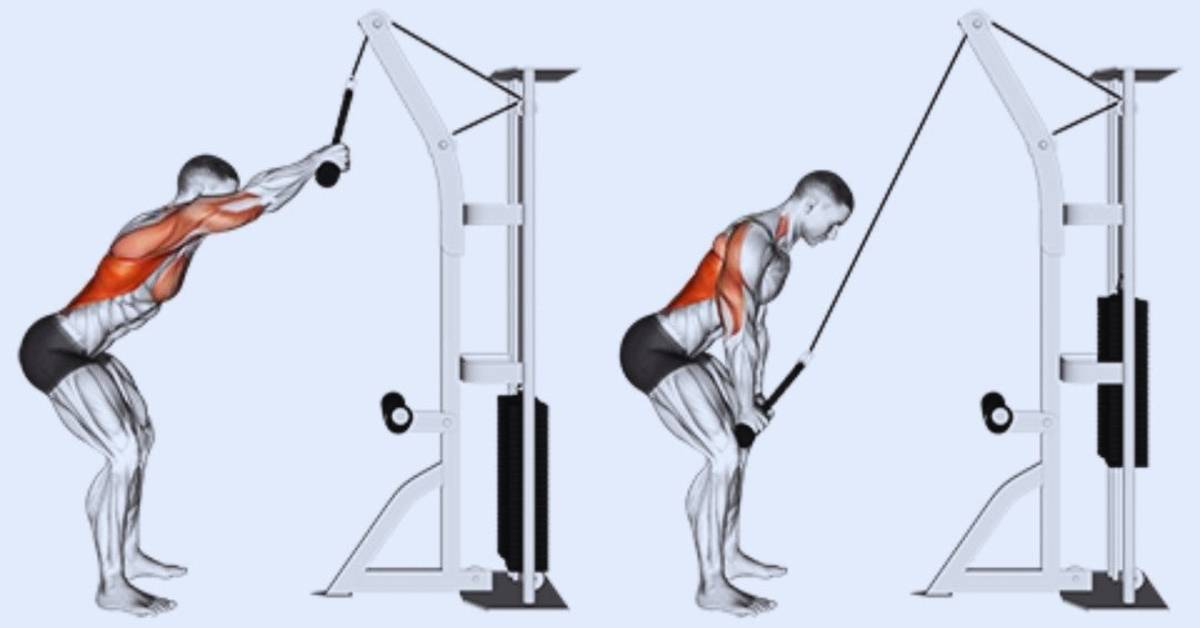If you’re looking for a way to build a thicker and stronger back, the chest supported dumbbell row is a great exercise to add to your routine. This move targets both muscle groups Back and Biceps while minimizing stress on the lower back, making it ideal for those seeking to avoid injury. Plus, it’s a relatively simple movement to execute, so even beginners can get started building strength with this exercise.
In this blog post, we’ll discuss how to perform chest-supported dumbbell rows, the benefits of incorporating them into your workout routine, and tips for getting the most out of this exercise.
Chest Supported Dumbbell Row Muscles Worked
The dumbbell chest supported row primarily works the upper back muscles, including the rhomboid, traps, and lats. It also engages the biceps, rear shoulders, and core to a lesser degree. The chest-supported position ensures that the lower back is stabilized throughout the exercise, reducing strain on this area.
How to Perform Dumbbell Chest Supported Row?
1. To begin, place a chest-supported row machine or chest support bench in front of a rack with a pair of dumbbells.
2. Grab the dumbbells and kneel on the chest support bench.
3. Position your chest against the chest support pad and slightly bend both knees.
4. Hold the dumbbells with an overhand grip, ensuring your arms are straight and your palms are facing inwards as you do this.
5. Keeping your chest pressed against the pad, take hold of the dumbbells and pull them towards your chest. It is important that you bend your elbows when doing so and squeeze the shoulder blades together as you do so.
6. Once your elbows are close to your chest, pause before slowly returning to the starting position.
7. Repeat this movement for the desired number of repetitions.
Important Tips
As you perform the chest-supported dumbbell row exercise, it is important to avoid the following common mistakes:
Maintain Proper Form
Keep your chest and stomach in contact with the bench throughout the exercise. You will be able to prevent any unwanted movements in your spine by doing this. Also, keep your elbows close to your body and your head in line with your spine.
Choose Appropriate Weight
Consider starting with lighter weights and focusing on proper form before trying to increase your weight. Choose a weight that you can perform for 8-12 repetitions with good form.
Squeeze Shoulder Blades
Squeeze your shoulder blades together at the top of the movement and hold for one or two seconds. This will help to engage your back muscles and maximize the benefits of the exercise.
Avoid Jerky Movements
When lifting weights, do not swing them or use momentum. This can put unnecessary stress on your lower back and reduce the effectiveness of the exercise.
Breathe Properly
It is important to exhale when lifting weights and to inhale when lowering them. This will help to maintain proper form and prevent any unnecessary strain on your body.
Warm-Up
Always warm up properly before starting the exercise. This can include some light cardio, stretching, or performing some bodyweight exercises that target the muscles you’ll be working on during the chest-supported dumbbell row exercise.
Gradually Increase Intensity
Once you’ve mastered the proper form with lighter weights, gradually increase the intensity by adding more weight or increasing the number of repetitions or sets.
Take Rest Days
Allow your muscles time to recover by taking rest days between workouts. This will help to prevent injury and ensure that your muscles have time to repair and grow.
Benefits of Chest-Supported Dumbbell Row
There are many benefits to doing this exercise, some of which are listed below:
Strengthens Back Muscles
The chest-supported dumbbell row is an effective exercise for strengthening the back muscles, which can help to improve posture, prevent injuries, and enhance overall physical performance.
Provides Support for the Spine
By lying face down on the incline bench, the chest-supported dumbbell row provides support for the spine, which can help to reduce the risk of lower back pain and injury.
Targets Multiple Muscle Groups
This exercise targets multiple muscle groups in the back, including the lats, rhomboids, and traps, helping to improve overall back strength and definition.
Improves Grip Strength
Holding the dumbbells during the exercise can help to improve grip strength, which is important for performing other exercises and activities that require a strong grip.
Easy to Perform
The chest-supported dumbbell row is an easy exercise to perform and can be done by beginners or experienced gym-goers. It requires minimal equipment and can be performed in most gym settings.
Enhances Muscle Endurance
By performing multiple repetitions of the exercise, you can help to enhance muscle endurance, which is important for improving overall physical performance and reducing the risk of fatigue during other exercises or activities.
Increases Range of Motion
The chest-supported dumbbell row can help to increase the range of motion in the shoulders and back, helping to improve flexibility and mobility in these areas.
Mistakes to Avoid
If you are performing the chest-supported dumbbell row exercise, there are a few mistakes that you should avoid:
Arching Your Back
It’s important to maintain a neutral spine throughout the exercise and avoid arching your back. Arching your back can put unnecessary stress on your lower back and increase the risk of injury.
Lifting Too Heavy
It’s important to choose a weight that you can handle with good form. It is important to remember that lifting too much weight can compromise your form and lead to injuries.
Rounding Your Shoulders
Avoid rounding your shoulders at the top of the movement. In turn, this can result in a decrease in the effectiveness of the exercise as well as an increase in injury risk.
Not Squeezing Your Shoulder Blades
Squeezing your shoulder blades at the top of the movement is an important part of the exercise. Failure to do so can reduce the effectiveness of the exercise and lead to imbalanced muscle development.
By avoiding these common mistakes and focusing on proper form and technique, you can perform the chest-supported dumbbell row exercise safely and effectively, helping you to build a stronger, more defined back.
Chest-Supported Dumbbell Row Exercise Alternatives
Here are some alternative exercises that you can do to work similar muscles as the chest-supported dumbbell row:
Seated Cable Row
This exercise involves sitting at a cable machine and pulling the cable towards your torso while keeping your back straight. It targets the same muscles as the chest-supported dumbbell row, including the mid-back, upper back, and rear shoulders.
Bent-Over Barbell Row
This exercise involves bending over with a barbell in your hands and pulling it towards your torso while keeping your back straight. It targets the same muscles as the chest-supported dumbbell row but also engages the lower back muscles to a greater extent.
Single-Arm Dumbbell Row
This exercise involves standing with a dumbbell in one hand and pulling it towards your torso while keeping your back straight. It targets the same muscles as the chest-supported dumbbell row but requires more core stabilization.
Renegade Row
This exercise involves starting in a plank position with a dumbbell in each hand and pulling one dumbbell towards your torso while stabilizing with the other arm. It targets the same muscles as the chest-supported dumbbell row but also engages the core muscles to a greater extent.
Inverted Row
This exercise involves setting up a bar at waist height and lying underneath it, then pulling your chest towards the bar while keeping your body straight. It targets the same muscles as the chest-supported dumbbell rows but can be a bit more challenging for those who are new to strength training.
Read Also: How to Do Chest Supported T Bar Row for Bigger Back








